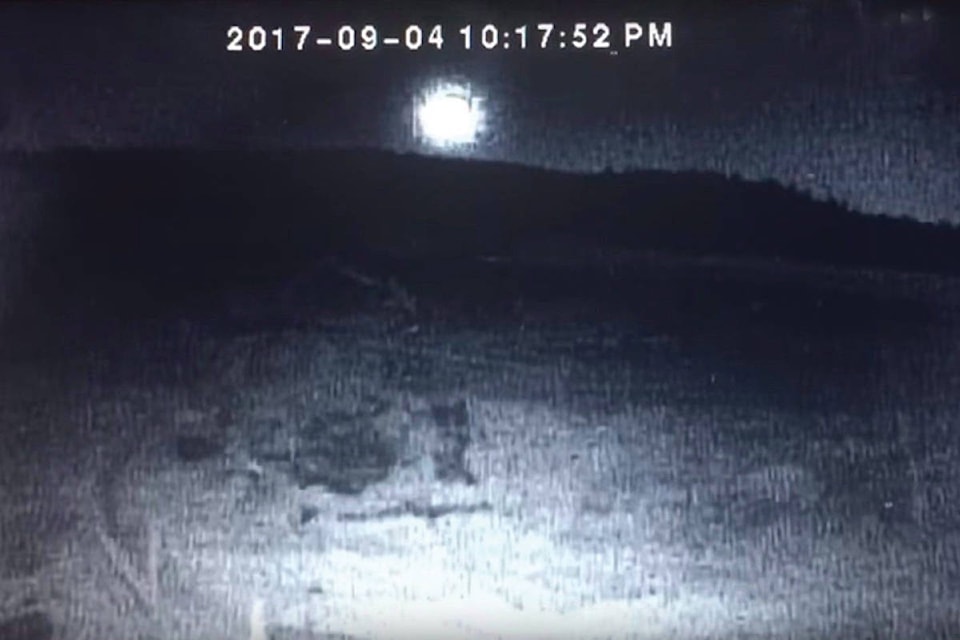CALGARY — Researchers have honed in on an area where chunks of space rock scattered in the rugged B.C. Interior more than two months ago.
A fireball lit up the sky over parts of Western Canada on the night of Sept. 4 and some witnesses reported hearing a loud boom. Reports came from Calgary, B.C.’s Okanagan Valley and Kootenay region and the Comox Valley on Vancouver Island. Dramatic videos of the vibrant flash were all over social media.
University of Calgary geoscientist Alan Hildebrand said Thursday that an asteroid fragment a metre wide and weighing between one and five tonnes crashed through the Earth’s atmosphere that night and broke into pieces.
Hildebrand and his colleagues asked for the public’s help in tracking down where the fragments landed by sharing videos.
“Where was the fireball in the sky? It had a trajectory that started some place at some altitude, ended some place at another altitude. We’ve been collecting videos and calibrating them so we can solve where the rock went through the atmosphere,” he said.
“You have to do a little bit of math and a little bit of triangulation, but of course you can’t do it without the video. Everyone bringing forward their videos was irreplaceable.”
The researchers narrowed the area — known as a strewnfield — down to a 20-kilometre stretch from just east of Crawford Bay, B.C., to north of the village of Riondel on the shore of Kootenay Lake.
They are still eager to see any security or wildlife footage from the Riondel area to further refine the location of the meteorites.
There are likely to be thousands of fragments ranging in size from as small as a peppercorn to as large as 10 kilograms.
Hildebrand said nine fragments have been found so far.
The first one was discovered by Fabio Ciceri, a visiting master’s student from Milan, Italy.
Ciceri said it was a black rock about the size of his fingernail that he found on private property in Crawford Bay with the help of a metal detection device.
“It was amazing. For me, it was like a dream to find a meteorite, because since I was a child I looked at the sky every night.”
Hildebrand said the meteorites are likely ordinary chrondites, the most common types that are found. They’re made up of the same metals and minerals that make up the Earth’s mantle.
“Our Earth was made from meteorites like this clumping together,” he said.
“By studying these meteorites … we learn things about the composition of our planet and the other planets.”
Because the strewnfield is in a forested and mountainous area, he expects people to be hunting for space rocks there for years to come.
“I look forward to lots of people being able to find their first meteorites.”
